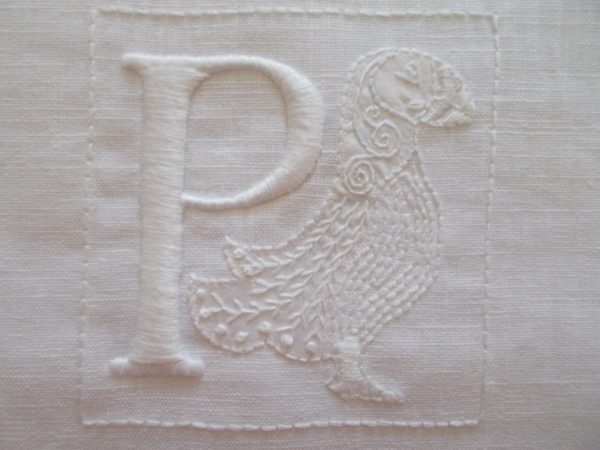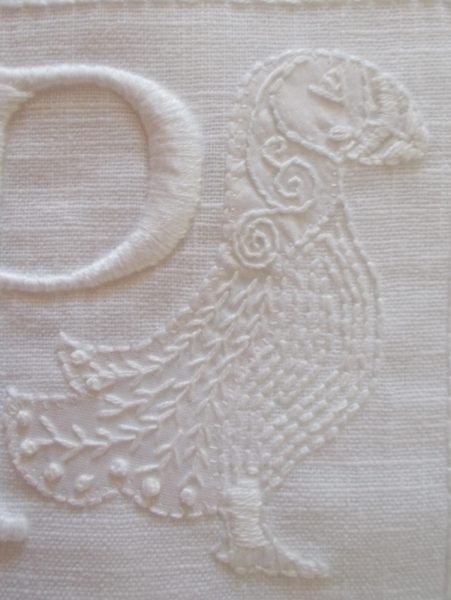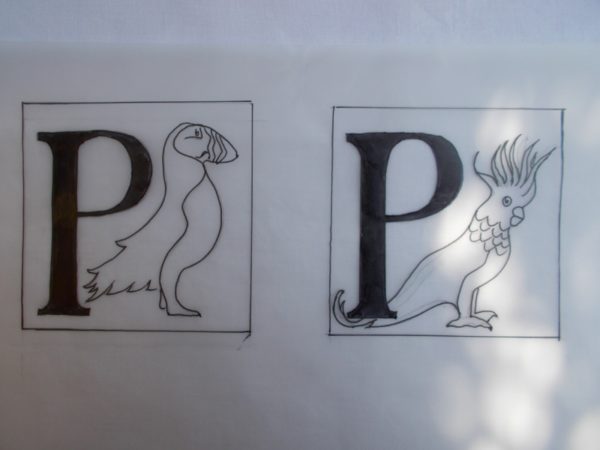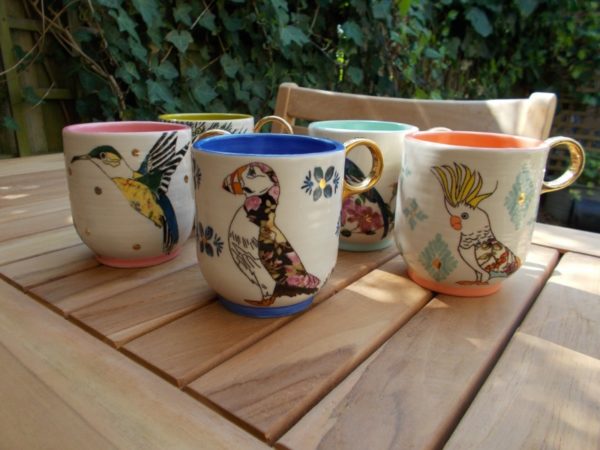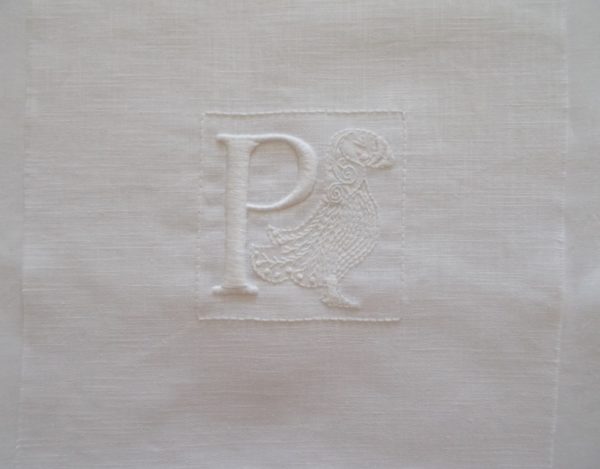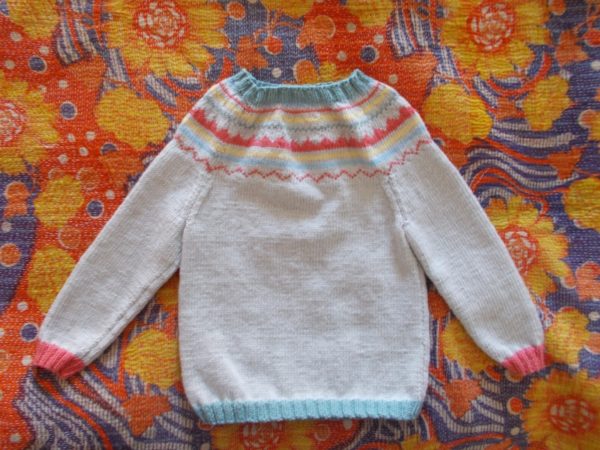
Jumper with Fair Isle yoke, (Debbie Bliss ‘Lulu’ design in baby cashmerino)
A simple Fair Isle design to try out this Debbie Bliss design for a yoked neck. Called Lulu it was only available as a downloadable pattern and unfortunately after much scrunching up and folding of the individual pages of the printed out pattern, I no longer have a picture good enough to put on the blog. I also failed to figure out how to block the jumper as it was knitted on circular needles and now I just hope it looks better on than it looks on the flat – oh and I also hope it fits comfortably which it looks like it might. Fingers crossed.
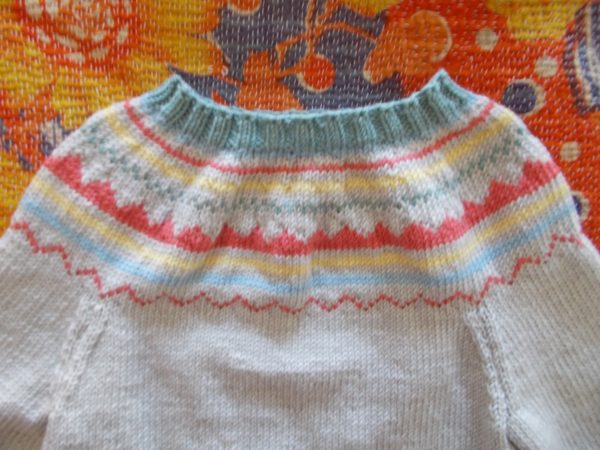
Jumper with Fair Isle yoke, (Debbie Bliss ‘Lulu’ design in baby cashmerino)
I’ve had a slightly frustrating week, though in terms of what’s happening to large chunks of the world you can read that irritation as a small insect bite on the rump of of something the size of a blue whale (not that whales have rumps nor, for that matter that they have mosquitoes or similar insect pests…but you know what I mean). In fact, when I think about it that frustration was the result of luxury, for without acres of spare time I’d never have indulged in multiple cycles of having a go at something, rejecting it, unpicking it and starting all over again… and then again and then again … And, as I’m not talking about devising vaccines nor thinking through protocols for coming out of covid 19 lockdown, just the design for a small embroidered cushion, I shall keep a tight hold on that perspective.
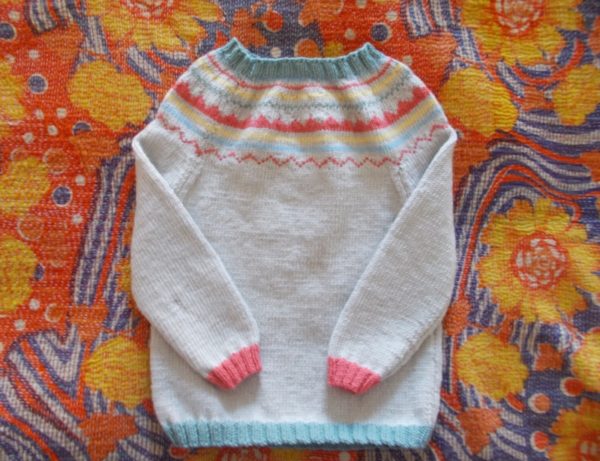
Jumper with Fair Isle yoke, (Debbie Bliss ‘Lulu’ design in baby cashmerino)
As I am still much tied up with embroidery threads, I leave you with a few crumbs:
1. A snippet from Monday’s Times by Emma Duncan (13 April) “Some years ago, Prince Philip was asked by a German news agency what he would like to be reincarnated as. A lethal virus, he said to reduce the population of the planet. Has anybody seen him recently? “
2. Those missing the ambiance of the library can tune into Sounds of the Bodleian which provides a choice of 4 libraries and enjoy the creaks, rustles, coughs, sniffs, scrapping of chairs and distant traffic noises. I spent half and hour in Duke Humfrey’s and another half an hour in the Upper Reading Room of the Radcliffe Camera – 2 quite different experiences;
https://www.ox.ac.uk/soundsofthebodleian/#radcam
3. A passage from Penelope Fitzgerald’s ‘Human Voices’ which 2. above reminded me of and which I hope makes you laugh (previously blogged about)
“It (the memo) was headed Lest We Forget Our Englishry. Sam had disappeared for over two weeks in one of the Wolseleys, pretty infirm at that time, with an engineer and an elderly German refugee, Dr Vogel – Dr Vogel, cruelly bent, deaf in one ear, but known to be the greatest expert in Europe on recorded atmosphere.”
…
The expedition to the English countryside arrived back with a very large number of discs. The engineer who had gone with them said nothing. He went straight away to have a drink. It was probably a misfortune that the Controllers were so interested in the project that they demanded a playback straight away. Usually there was a judicious interval before they expressed any opinion, but not this time.
‘What we have been listening to – patiently, always in the hope of something else coming up – amounts to more than six hundred bands of creaking. To be accurate, some are a mixture of squeaking and creaking.’
‘They’re all from the parish church of Hither Lickington,’ Sam explained eagerly. ‘It was recommended to us by Religious Broadcasting as the top place in the Home Counties. What you’re hearing is the hinges of the door and the door itself opening and shutting as the old women come in one by one with the stuff for the Harvest Festival. The quality’s superb, particularly on the last fifty-three bands or so. Some of them have got more to carry, so the door has to open wider. That’s when you get the squeak.’
‘Hark, the vegetable marrow comes! cried Dr Vogel, his head on one side, well contented.”
For anyone wanting to be reminded the slight chaos of village church Harvest festivals do read my blogpost http://www.addisonembroideryatthevicarage.co.uk/2015/10/09/harvest-festival-2015/

